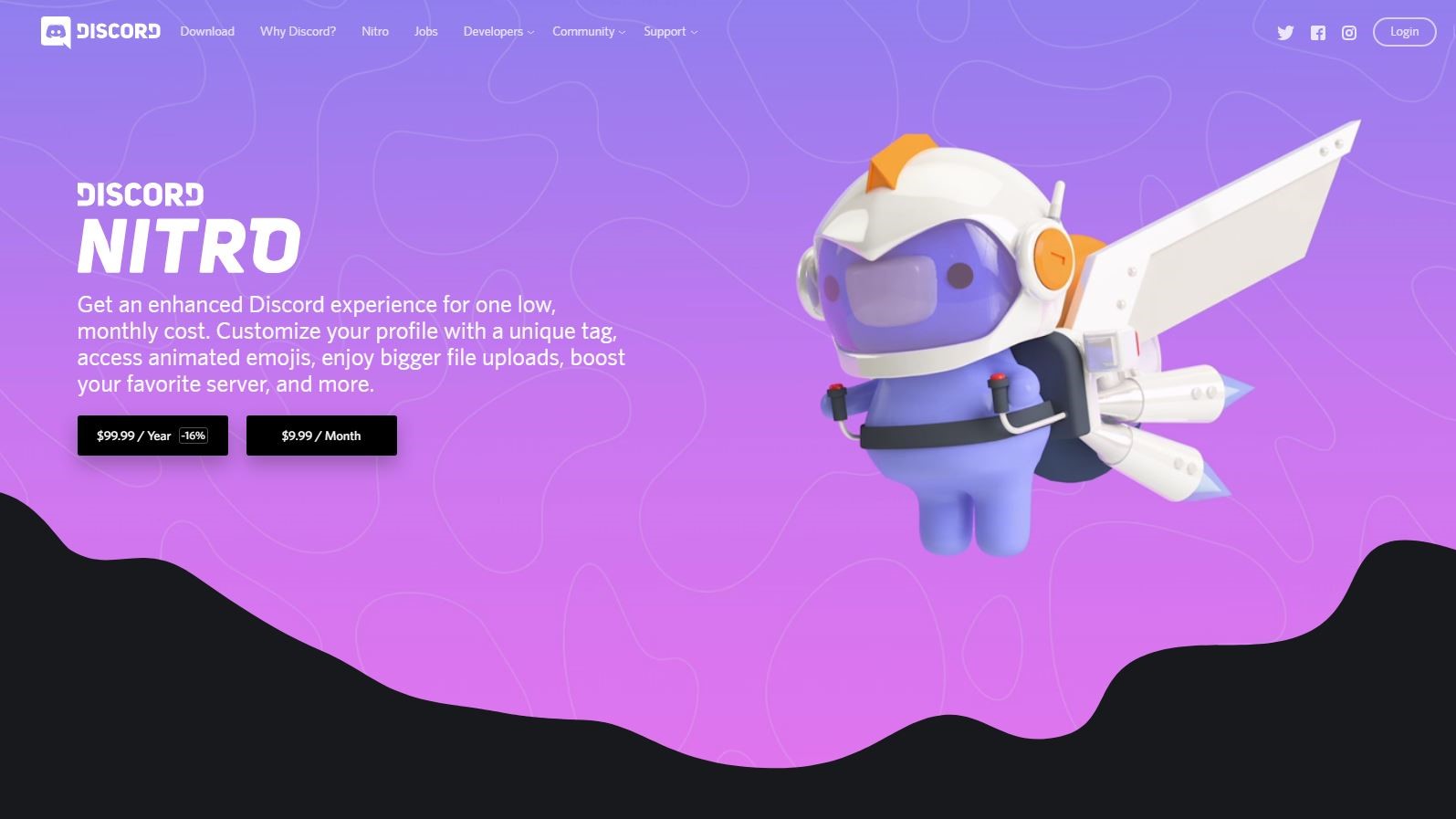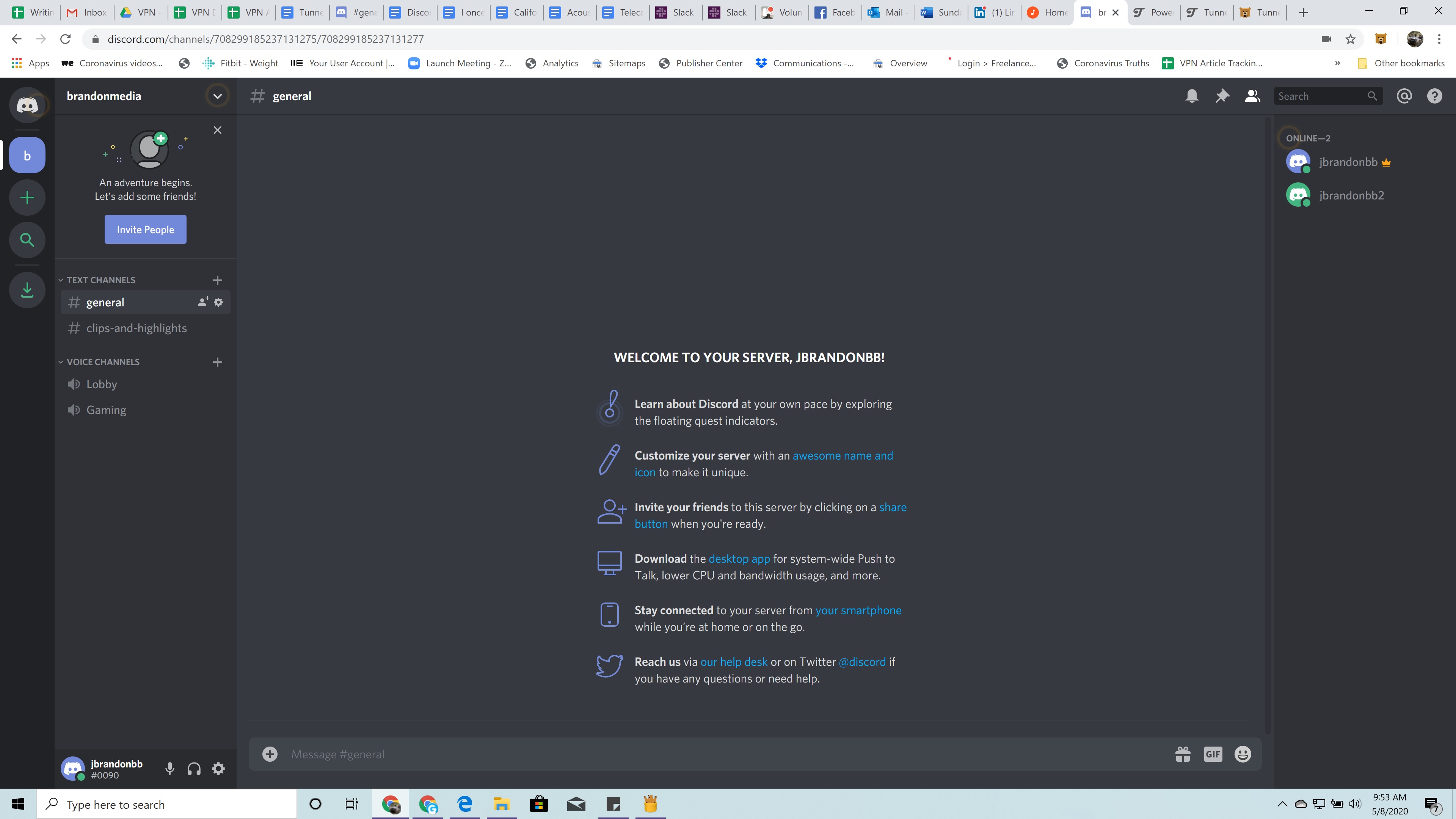TechRadar Verdict
Discord is not at all meant as a haven for chaos and disruption, as the name might imply. Instead of the dictionary definition of “discord” (e.g., disagreements), the app unites people from all over the planet, mostly gamers on public servers but also teams working on projects together. Where the app truly shines is with low-latency voice chats, which can either work like a traditional voice call or in a voice chat lobby that is always on and available.
Pros
- +
Easy access to public servers
- +
Persistent voice chat
- +
Easy live screen-sharing
Cons
- -
Meant mostly for gamers
Why you can trust TechRadar
Power users in Slack already know this, but the best team messaging apps out there - including Facebook Workplace and a few others - provide extreme flexibility. You can customize the interface, add an endless array of channels and apps, and chat instantly with people by voice or video. Large companies that use Slack also tend to create short-term accounts for people who have access only to a limited number of channels and only for a set period of time. This layered approach makes team messaging and online collaboration less chaotic and more controlled - e.g., communication is not so haphazard and random.
While it might not be your first choice for a team messaging app, Discord puts a strong emphasis on instant voice communication and real-time collaboration which makes it a great fit for discussing projects and other work issues with your colleagues. That is if you can convince them to use it first.
- Want to try Discord? Check out the website here

Plans and pricing
Discord is a free app with a wide array of features. In fact, the paid app - called Discord Nitro - only adds a few vanity features like the ability to add custom tags. There is unlimited file storage with the free plan, although the one glaring limitation here is that file uploads have to be 8MB or less. Nitro removes this barrier almost entirely by increasing the upload size to 100MB. The Nitro plan costs $9.99 per month per user or $99.99 per year per user.

Interface and performance
The first thing you might notice about Discord is that it does have a gamer’s aesthetic. We might be pigeon-holing here, but the dark grays and blacks seem to match up with the night-time gaming rituals of some, although you can tweak the interface easily enough. In fact, switching to “light” mode reveals that Discord looks a bit like Slack albeit with a bright blue color palette instead of purple. Beyond those initial comparisons, Discord is nothing like Slack.
For starters, this team messaging app emphasizes voice chat. You can still do a video chat in groups, but because of the gamer mentality, there are two distinct channels for communication. Text channels function like glorified text messaging apps - groups can discuss projects and share files easily, However, just below that is another section called Voice Channels. This is where things get interesting - you can set your microphone to “always on” when you join a voice channel and then go about your business - e.g., sharing your screen. Note that in the browser version you have to keep that tab in the forefront or the persistent voice chat won’t work. In the desktop app, anyone who joins that voice channel can then chat live with you.
This is more powerful than it sounds. It’s a bit like having a window to the world open at all times, especially if you join a public server. It’s also reminiscent of the persistent voice chat in a game like Fortnite and encourages community engagement and dialogue.
For business purposes, Discord works just as well for discussing a web development project as it does for completing a Minecraft custom project. As mentioned earlier, the ability to set permission levels means you can add a new employee to a few chats here and there but hide some of the discussions meant for departmental or executive use. Overall, Discord is heavy on real-time communication and collaboration, which makes it ideal for any purpose.
Sign up to the TechRadar Pro newsletter to get all the top news, opinion, features and guidance your business needs to succeed!
Features
Discord is not meant as a secure, enterprise-grade messaging app. It’s fun and quirky, with little pop-ups to guide you through the basic functions and cute cartoon-like icons. Yet, everything you need is there. Up to eight people can chat over video in the free version. Push-to-talk channels make voice communication persistent and vibrant. The only minor ding is that Discord does not support threaded conversations, which is something Slack added a while ago.

It’s interesting that people tend to overlook Discord as anything but a gamer’s portal meant for entertainment and fun. Yes, it’s intended for that and draws in people by the millions. (At last count, around 250 million people are using it - the Fortnite server alone has 500,000 members.) There is some exceptional power here, however, for those who want to use Discord for business purposes or even to discuss a non-profit project, a school function, or an upcoming event.
The reason it’s so powerful comes down to a few important factors. Primarily, Discord has managed to make voice communication over the Internet seem like the person is sitting right next to you. It feels more “real-time” than other team messaging apps. In every server and channel, you can adjust permissions so that members only have access to the conversations that matter the most to them. The app is intended for massive public discussions with servers you can create in seconds and use with hundreds or thousands of people.
It’s one of the best team messaging apps around, even if you think it’s mostly for gaming. All of the basics are here for collaboration.
The competition
We haven’t found a team messaging app that emphasizes instant voice communication and real-time collaboration like Discord. It seems to stand alone in that regard, emphasizing a community-based ethos that could only come from the world of online gaming.
How that spills over to a company that makes widgets or needs to develop a marketing plan is a bit of an unknown - you could argue that Slack and Microsoft Teams take a more serious approach. It’s not that Discord won’t work for a company messaging portal - it would work quite well. The hurdle to overcome is that it is widely known as a gaming platform.

One quick search for public servers reveals that right away - it’s all Minecraft and Fortnite, not so much Microsoft Outlook or Trello in terms of the publically available servers. Convincing colleagues to use Discord might take some minor arm-twisting, but the actual app is a joy to use.
Final verdict
In the end, Discord has attracted millions of users because it “just works” and doesn’t let an abundance of high-end features weigh the app down or block the real-time communication. We didn’t find any features related to data retention, archiving data for long-term use, or e-discovery. The fact that it’s entirely free with unlimited storage is a major bonus.
The question to answer for anyone considering the app for business purposes is whether the gaming aesthetic proves - as we think it does - that this is an outstanding community chat app or something more like Twitch that is meant only for gaming pros.
- We've also highlighted the best online collaboration tools
John Brandon has covered gadgets and cars for the past 12 years having published over 12,000 articles and tested nearly 8,000 products. He's nothing if not prolific. Before starting his writing career, he led an Information Design practice at a large consumer electronics retailer in the US. His hobbies include deep sea exploration, complaining about the weather, and engineering a vast multiverse conspiracy.

